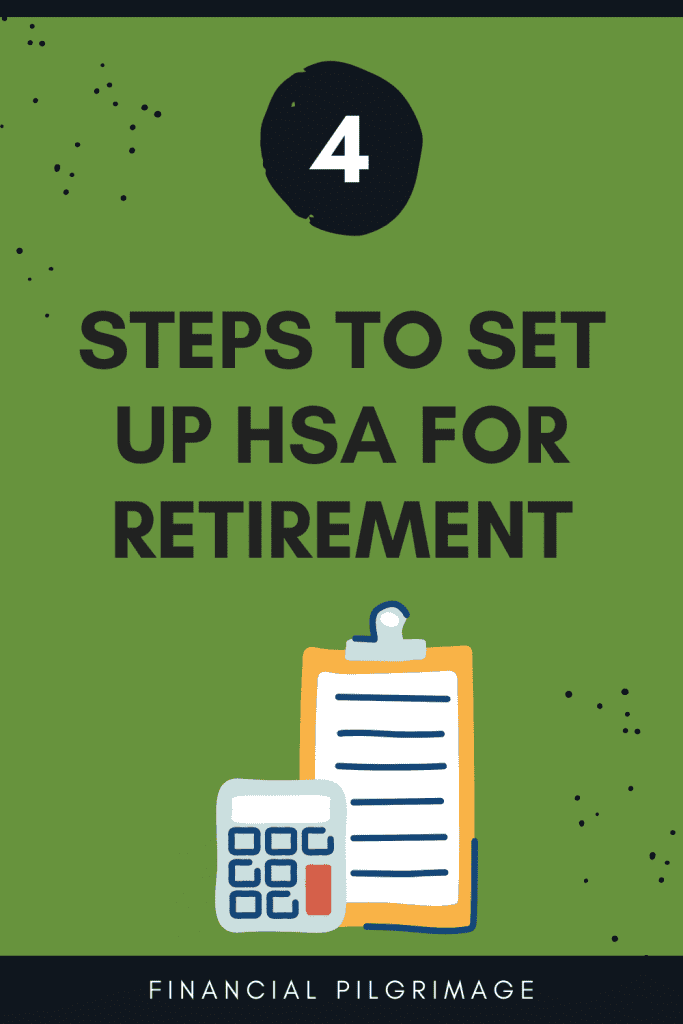My eyes lit up as I read through the list of new benefits my employer would offer in 2019. They would begin offering a Health Savings Account (HSA) the following year. At the time, I didn’t know what that meant. However, I did know that the personal finance community touted this as the holy grail of retirement accounts.
Immediately I was confused. How can something called a health savings account be used to fund retirement? What’s all this talk about triple tax benefits? First of all, “savings accounts” generally have received a terrible reputation given that they’ve paid almost no interest for over a decade.
Second, how can accounting for health care expenses be used to fund retirement? That led me to dig through countless amounts of information, trying to answer these questions. The rest of this post will take you on that journey and land where we are today—fully funding and investing in our HSA while paying qualified medical expenses out of pocket.
What Is a Health Savings Account (HSA)?
First, start by reviewing a Health Savings Account (HSA) definition. According to the IRS website:
“A Health Savings Account (HSA) is a tax-exempt trust or custodial account you set up with a qualified HSA trustee to pay or reimburse certain medical expenses you incur. You must be an eligible individual to qualify for an HSA.”
So what does this mean in plain English? The intended purpose of an HSA is to allow you to pay for medical expenses tax-free. An HSA allows you to invest money in stocks or other funds, similar to how you would invest money in a 401k or individual retirement account (IRA). That money is then available to use for qualified medical expenses.
The tax benefits of an HSA are significant. When HSA dollars are used for qualified medical expenses, the tax benefits are better than a 401k or IRA. With a 401k or IRA, you have to choose if you’d prefer your dollars to be taxed upfront (Roth) or on the back end (Traditional). HSAs provide triple-tax benefits, which means you can invest in your HSA with pre-tax dollars, grow those dollars tax-free, and withdraw tax-free when used for qualified medical expenses.
With an HSA, you can fund up to $7,750 (for a family filing jointly) or $3,850 (for an individual) in 2023. However, HSAs are usually only available with a higher deductible and lower premium insurance plans.
When my company started offering an HSA option, I switched from our best plan, which had a high annual premium (I was paying almost $8,000 per year in insurance premiums) but had very few out-of-pocket expenses, to a higher deductible but lower premium plan (about $1,500 per year). Still, I have to pay much more out of pocket.
Since the out-of-pocket maximum is only $6,000 per year, it would cap pretty quickly if a severe medical situation happened. However, there are frequent payments until we hit that $6,000 threshold and meet our $2,600 annual deductible.
How to Maximize the Benefits of an HSA
Hopefully, you are still tracking with me. But, you may be wondering, if I have a higher deductible plan and therefore have to pay more out of pocket, how will the investments in my HSA ever grow?
This is our second year with an HSA; we’ve funded the maximum amount each year. Last year, whenever we had a medical expense, we used money from our HSA to pay the bills. Our medical expenses were about $3,000, and I’ll admit it was nice to make that payment from the HSA and not worry about it. The downside is that $3,000 is now out of the HSA and cannot be invested and grow tax-free over several decades.
This year, we decided not to pay our medical bills from our HSA funds. This is where the magic of an HSA comes into play. Last month, we received a bill for $1,200. One option would have been to pay that bill using money already in our HSA. However, this year, we started paying bills out of pocket from our savings. Therefore, since we aren’t pulling that $1,200 out of our HSA, it can grow tax-free for decades until we retire.
Since we saved the $1,200 receipt, we can pull that money out of the HSA tax-free at any point. Of course, if we pull out sooner rather than later, we’ll miss out on the growth over the years, but it’s still nice to have the ability to have access to that money tax-free if necessary. We save our qualified medical expense receipts in a Google Drive document.
Therefore, of the $10,000 currently in our HSA, we have medical receipts totaling about $3,000 that we could pull out at any time without penalty. The plan is to let that money grow for several years, but it’s also nice to know we can access it if needed. It essentially becomes another emergency fund that we hope never to use, but is assuring to know it’s there.
How Much Will Our HSA Be Worth At Retirement?
I am 41 years old and am planning to work until age 55. Therefore, assuming regular contributions of about $7,500 per year for 15 years, plus an additional ten years of growth until age 65, we’ll have accumulated about $425,000. This assumes a 7% interest rate. Since we are getting a late start in life with our HSA, there isn’t as much time for compounding.
Steps to Set Up Your HSA for Retirement
Using an HSA to fund retirement is a personal decision. While this is not financial advice, if you want to consider doing the same, here are the steps you’d want to follow.
- Step 1: Determine if your employer offers an HSA option and enroll if available. If you are self-employed, there are also options as long as you are enrolled in an HSA-compatible health plan.
- Step 2: Fund your HSA account. The maximum annual contribution for 2023 is $7,750 and will likely increase slightly every year or two.
- Step 3: Pay medical expenses out of pocket and invest your HSA funds. This is the key if you want long-term compound growth in your HSA. My HSA is currently invested in a low-fee S&P 500 index fund. Make sure you take the time to invest your HSA money, or else it will sit in a regular account and not accrue any interest.
- Step 4: Save your receipts for qualified medical expenses. We save all of our receipts in a simple Google Document that can be accessed through Drive. Keeping your eligible medical receipts allows you to pull out money any time tax-free (though even better if you let your money grow over the years).
That’s it! Then, you need to sit back and let your money compound. The hardest part in all of this is paying for your medical bills out of pocket. If you end up going with a high deductible HSA-compatible plan, ensure you know the maximum annual out-of-pocket that you could potentially pay in a year. Of course, you’ll also need savings to pay for medical expenses out of pocket.
Our maximum annual out-of-pocket without an HSA-compatible plan is $6,000. Therefore, in the future, we will put $6,000 aside so that it won’t sting as much when we pay for our medical expenses outside of our HSA.
I know this can all be confusing, so please let me know if you have questions. Thanks for reading!

Mark is the founder of Financial Pilgrimage, a blog dedicated to helping young families pay down debt and live financially free. Mark has a Bachelor’s degree in financial management and a Master’s degree in economics and finance. He is a husband of one and father of two and calls St. Louis, MO, home. He also loves playing in old man baseball leagues, working out, and being anywhere near the water. Mark has been featured in Yahoo! Finance, NerdWallet, and the Plutus Awards Showcase.



Good overview of the HSA. It’s definitely important to run the math on healthcare costs between a high deductible plan and other plans. For years I wanted to get into one at my employer. The HSA plan was $1,300 cheaper per year in premiums for two of us, but I would have paid $4,000 more for lab tests and doctor visits, totally offsetting the savings from the lower premiums. The plans we had were unique in that an HSA plan you had to pay up to deductibles for lab work but in the non-HSA plan the lab work was covered 100%. So it’s definitely important to know how costs are incurred in each plan, which may be different.
Now that I am retired, I am in a new plan with an HSA and love it. We plan to contribute each year we are eligible and let the money grow tax free. Aside from scanning all our receipts, I have an excel file where I record all the dollar amounts. I was on COBRA while spouse was on an ACA plan with an HSA. Cobra was pricey but HSA money can be used to pay for COBRA premiums, so I will be looking forward to some day getting reimbursed for that cost!
I completely agree. In our case the annual premium at work for our most expensive plan was about $7,000. The max out of pocket for our high deductible plan is $6,000 for in network (plus another $1,500 in premiums). Even the out of network isn’t much higher. I know not everyone is in a similar situation so great point about ensuring people do their diligence before switching to a high deductible plan!
I am eyeballing the high deductible HSA plans for my healthcare next year. This was a big help!
Glad it could help! Make sure you compare the total costs of your current plan and high deductible plan to ensure it’s the right move.